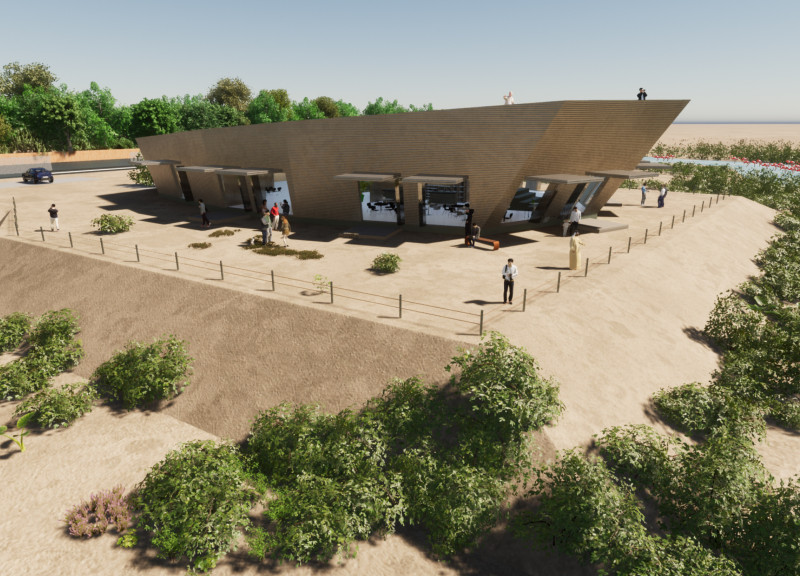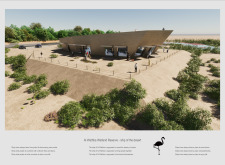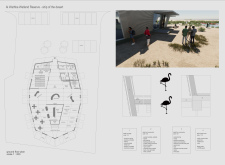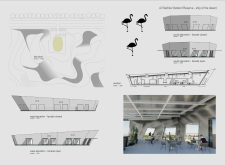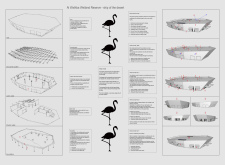5 key facts about this project
The primary function of the Al Wathba Wetland Reserve is to serve as an educational hub, providing information and fostering appreciation for the local flora and fauna. The building accommodates various spaces tailored for visitor engagement, including an information center with interactive exhibits, a café for social gathering, and outdoor areas designed for contemplation and connection with the environment. The layout of the reserve promotes an open and inviting atmosphere, with ample opportunities for visitors to immerse themselves in the natural beauty of the wetlands.
The architectural design is characterized by a unique, flowing form reminiscent of a ship, which optimizes the building's functionality while blending harmoniously with its environment. The structure's innovative use of reinforced concrete ensures stability and durability, while wooden boarding adds an element of warmth and connection to the surrounding landscape. The integration of large glass facades not only allows natural light to permeate the spaces but also fosters a visual connection to the wetlands, enhancing the overall visitor experience.
One of the critical aspects of this project is its focus on sustainability and environmental responsiveness. The architectural design employs advanced climate-responsive strategies to address the challenges posed by the desert environment. Features such as shading devices, which help mitigate direct sunlight, and natural ventilation systems contribute to a comfortable indoor climate while reducing energy consumption. Additionally, the incorporation of a green roof supports insulation and biodiversity, transforming the building into an extension of the natural habitat.
The spatial organization of the reserve is designed to enhance visitor interaction with the environment. The ground floor includes key functions categorized for educational purposes, enabling guests to explore information related to local ecology while engaging with the exhibited materials. The design emphasizes flexibility, allowing for the reconfiguration of spaces to accommodate various events and activities that align with the mission of the reserve.
What sets this project apart is its dedication to promoting community engagement through architecture. By designing spaces that facilitate interaction and education, the reserve serves as a community focal point for discussions about environmental stewardship. The careful selection of materials reflects an emphasis on sustainability, discouraging waste and highlighting the importance of the ecosystem the building represents.
Overall, the Al Wathba Wetland Reserve is a significant contribution to contemporary architecture, demonstrating a balanced approach to design that prioritizes ecological awareness, functionality, and visitor engagement. It stands as a model for future architectural projects located in delicate ecosystems, promoting a dialogue between humanity and nature. To gain a deeper understanding of this impressive project, including its architectural plans, sections, designs, and ideas, visitors are encouraged to explore the project presentation for a more comprehensive look at the intricate details and concepts that shape this remarkable design.


